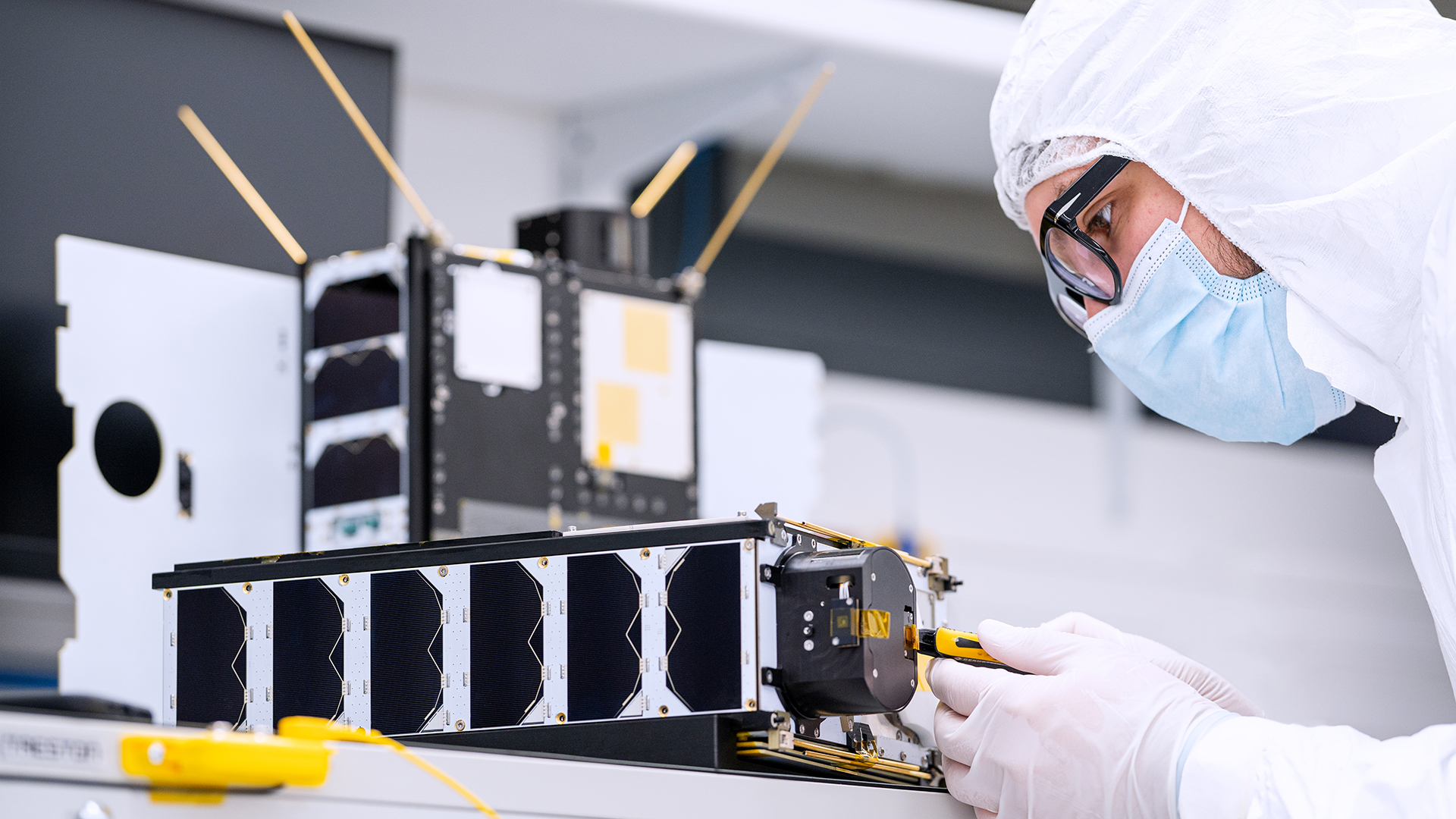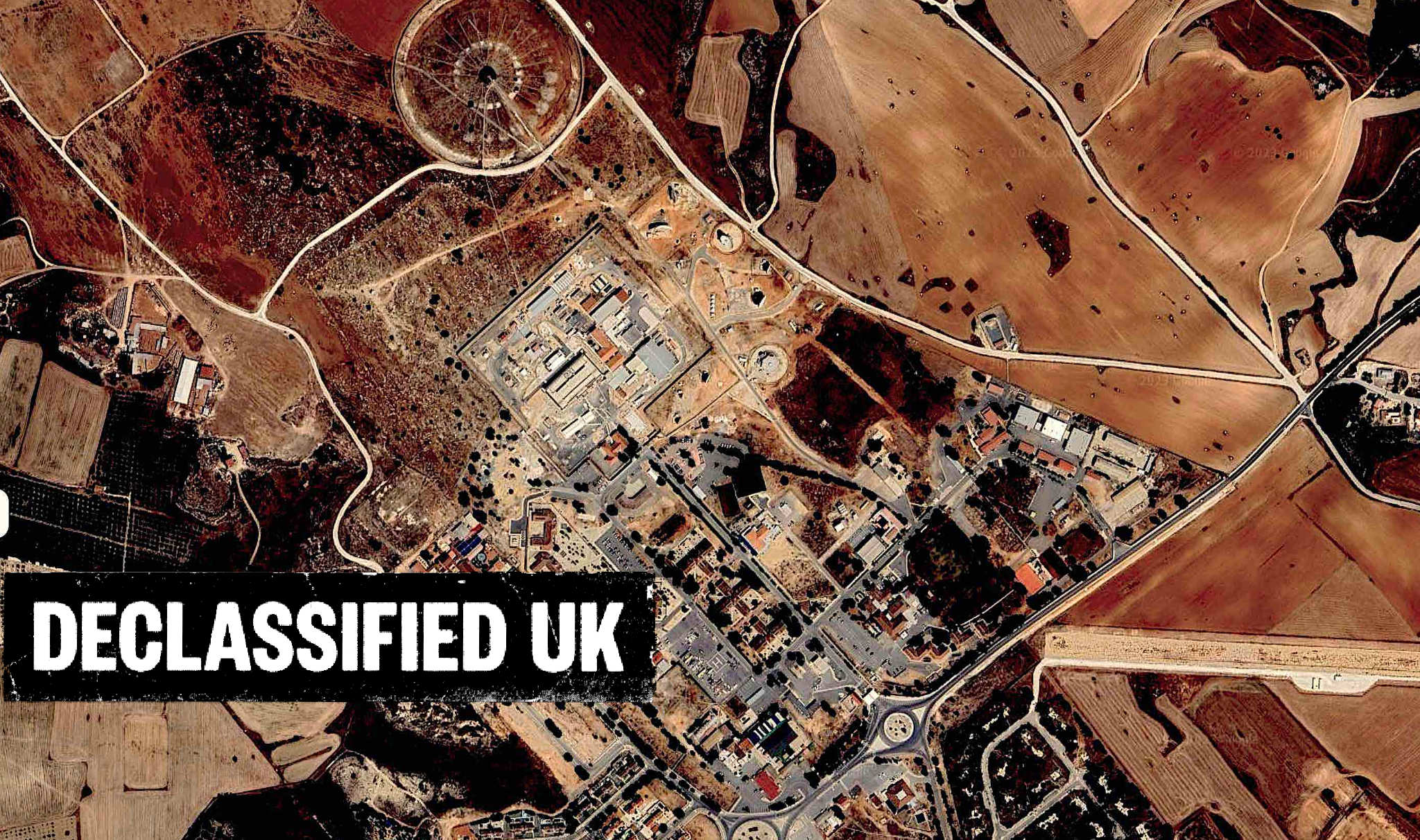IS MILITARY SPACE-BASED JAMMING NORMAL? SOME WORRY IT IS
Most open source researchers following the Chinese military space program are well aware of China’s perceptions of the U.S. Space Force and its public technology and operation plans. However, I was surprised to find the People’s Liberation Army Strategic Support Force discussing their perspectives of U.S. and Russian space-based jamming. This isn’t the typical thing that the People’s Liberation Army includes in their discussion of the former Strategic Defense Initiative. I asked myself, “Is global military space-based jamming normal?” As it turns out, intentional jamming may be more prevalent than the very limited media coverage of it implies. My research shows that the Chinese military thinks space-based jamming is a common practice among space powers. As a result, they claim to have developed an experimental spacecraft to practice signal interference between satellites from geosynchronous Earth orbit.
The People’s Liberation Army researchers described their experimental jammer as targeting communications satellites. Depending on the location and power capacity of the jammer, it could interfere most easily with other nearby communications satellites, or those at lower orbits. This could be detrimental for any country using communications satellites near China, including U.S. partners and
allies.
The U.S. military is heavily reliant on satellite communications for power projection, and as such has developed a suite of anti-jamming capabilities. However, an electromagnetic spectrum-enabled cyber intrusion, sometimes called
radio frequency-enabled cyber, is still a concern, even in
space.
Current space regulations and treaties do not explicitly prohibit space-based jamming, only that which is harmful. The United States and a handful of other countries have raised concerns with it, signaling that some may have experienced instances of intentional, harmful jamming from space. The People’s Liberation Army has
only recently written about its perception that the United States and Russia already have space-based jammers. If the United States hopes to influence future behaviors, improved messaging and continued international engagement is needed.
In the meantime, incremental improvements in transparency and technology could ease the perennial challenge of attributing intentional jamming. The space industry’s improved awareness of spectrum interference and willingness to report anomalies and cyber intrusions is one of the best ways to support policymakers to further safeguard U.S. military communications and lead international discussions.
An International Issue
Based on
states’ submissions to the U.N. General Assembly Resolution 75/36 in 2021 and the recently concluded Open Ended Working Group on Reducing Space Threats through Norms, Rules and Principles of Responsible Behaviors, military space-based jamming in peacetime deserves more discussion. The U.S. submission included space-to-space and space-to-ground threats as distinct categories separate from ground-to-space threats, and called out radiofrequency interference as a specific threat in each
category. Depending on the spectrum band, a space-to-ground signal could interfere with a space-to-space signal.
U.S. allies and partners have also recently raised space-based jamming as a space security concern. The British
submission to the working group raised space-to-space jamming, even if only for experiments, as potentially leading to misunderstanding, miscalculation, and unintended escalation. Their
submission to Resolution 75/36 discussed communications interference caused by uncoordinated proximity operations in space. The French government’s submissions to
Resolution 75/36 and to the
working group also both raised space-based jamming, though their written submissions did not distinguish between the space-to-ground or space-to-space categories.
However, France did include both space-based and ground-based jamming among their top three space threats. The Brazilian
submission to the working group explicitly called out space-based sensors for jamming, as well. Brazil mentioned an “electronic attack” in space among their top four threatening behaviors, and also did not distinguish between the space-to-space or space-to-ground categories. The Chinese delegation only raised ground-to-space jamming in their
submission to Resolution 75/36. Russia did not mention any jamming in
either submission.
If national representatives to the United Nations discuss space-based jamming as threatening, it may be a common occurrence, beyond unintentional interference or a space weather event. This led me to review U.S. military
doctrine and
budget requests specific to
space and radio frequency
spectrum operations. Based on my review, none of them explicitly mention space-based jamming. However, these documents do include general plans for countermeasures and a “
shift to offense.” Some U.S. media reports of U.S. Space Force orbital warfare
training, U.S. policymakers referring to jamming as being “
normal,” and Department of Defense space budget requests including “
offensive capabilities” could give the impression that the United States considers military space-to-space jamming appropriate and necessary. The implications of a tacit approval for jamming in space deserves more domestic and international discussion, and would be consistent with the U.S.
submission to the U.N. General Assembly, which made a similar call for deeper discussion.
Chinese Perceptions
At least some in the People’s Liberation Army Strategic Support Force perceive that the
United States and
Russia already have on-orbit spacecraft capable of jamming satellite downlink and crosslinks. In 2019, a People’s Liberation Army unit under the Strategic Support Force published an academic
assessment of Russia’s
LUCH-Olymp satellite, noting that they could not rule out that the satellite was carrying an attack payload, probably referring to an electronic jamming payload given the frequency with which it
approaches non-Russian communications satellites. Another Strategic Support Force unit in 2020 published a
paper on American electronic satellite jamming systems, and included what they perceived to be U.S. systems in geosynchronous Earth orbit capable of jamming other satellites. The authors judged that the U.S. Geosynchronous Space Situational Awareness Program satellites and
other national security satellites were capable of space-based jamming.
China’s Strategic Support Force’s perception that other leading countries already have on-orbit jammers, and their commitment to weakening the U.S.’s ability to use satellites in any potential conflict with China, may have driven them to develop their own experimental on-orbit jammer. At least according to Strategic Support Force technical reports, by 2020 they had
tested an experimental on-orbit jamming system, after which they concluded they needed to develop Ka-band capability. In late 2022, the Strategic Support Force received an invention
patent for a method to evaluate if a satellite’s on-orbit jamming capability and electronic reconnaissance capabilities were working. None of these documents discuss the Strategic Support Force’s objectives or intentions, nor specific satellites, but they do at least indicate that it has tasked its satellite developers and operators to explore options for on-orbit jamming.
Legal Interpretations
Many
legal interpretations indicate that military space-based jamming is
not prohibited.
Article 48 of the International Telecommunication Union’s constitution provides freedom for military radio installations but requires them, so far as possible, to observe provisions to prevent “harmful interference.” The
Treaty on Principles Governing the Activities of States in the Exploration and Use of Outer Space, including the Moon and Other Celestial Bodies (also known as the Outer Space Treaty) provides a mechanism for consultations regarding perceived “harmful interference,” and only explicitly prohibits nuclear weapons and other weapons of mass destruction. The International Telecommunication Union
constitution defines harmful interference as “interference which endangers the functioning of a radionavigation service or of other safety services or seriously degrades, obstructs, or repeatedly interrupts a radiocommunication service operating in accordance with Radio Regulations.”
The above examples of the United States and its allies and partners raising space-based jamming as a security threat suggest that there needs to be further discussion on the topic and substantiation of the threat. Since 2014, the International Telecommunication Union has collected international satellite operators’ reports of harmful interference, which could emanate from space and ground sources. According to the union, these
cases have significantly
grown. This indicator should be considered cautiously, as the International Telecommunication Union does not disaggregate the volume of reports and satellite operators’ increasing familiarity with the reporting mechanism, nor the growing numbers of satellites. However, it provides one of several starting points to deepen discussions.
Additional organizations are also working to get better data on intentional harmful interference. For example, the Space Data Association — a nonprofit organization of satellite operators — continues to strengthen efforts to “create a database of interference events and to share data that supports
geo-location. Data shared with the Space Data Association by definition in the member agreement can be used to validate complaints taken to the International Telecommunication Union. A newer organization focused on cyber security threats to space systems, called the
Space Information Sharing and Analysis Center, also provides participants a way to share information on multiple types of electromagnetic interference, including space-to-space signal spoofing and malware injection.
To date, ground-to-space jamming has been the easiest to attribute. Toward better identifying space-based sources of interference, the U.S. Department of Defense is already taking a leadership role in developing space-based technologies to assess a spacecraft’s
local space weather environment. This will further support efforts to carefully attribute intentional jamming. While many organizations provide notifications of space weather events like solar flares that will impact many satellites, individual satellites may experience unique environmental impacts. As more of these systems are
integrated into Department of Defense high-value satellites, the military process for reporting and assessing on-orbit interference will be more empowered to attribute intentional on-orbit jamming.
The United States and its allies and partners have already raised space-based jamming at international forums, so there is a clear opportunity for the United States to lead deeper discussions. In the U.S. submission to the United Nations, it said that “radiofrequency interference” and “interference with security-related space systems” are among the topics that “
warrant additional discussion.” The Department of Defense has also already committed to avoiding “harmful interference” in its
Tenets of Responsible Behavior in Space, which the department released in mid-2021. Attributing intentional space-based jamming could also be slowly, but increasingly within reach with the help of new technologies to monitor a spacecraft’s local space weather environment. Increased discussion of the topic could also improve helpful distinctions in the reporting of harmful interference. The Strategic Support Force’s perception that the United States and Russia already have spacecraft capable of space-based jamming could cause miscalculation and escalation, especially without any military-to-military engagement. Working through the United Nations to deepen discussion on space-based intentional jamming would help inform a wider group of states on the threat, and further demonstrate American leadership in space.
Most open source researchers following the Chinese military space program are well aware of China’s perceptions of the U.S. Space Force and its public
warontherocks.com

 app.blackhole.run
app.blackhole.run

 app.blackhole.run
app.blackhole.run











